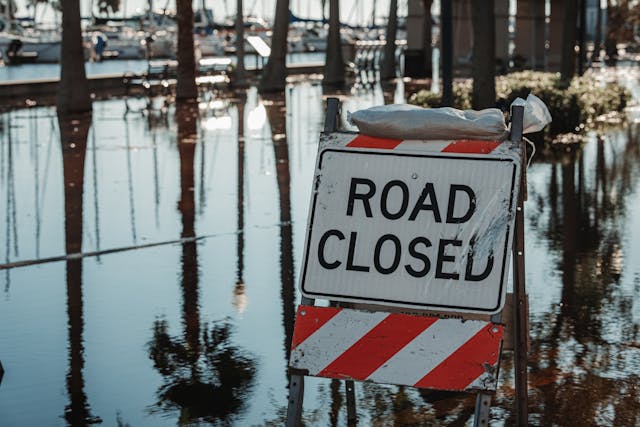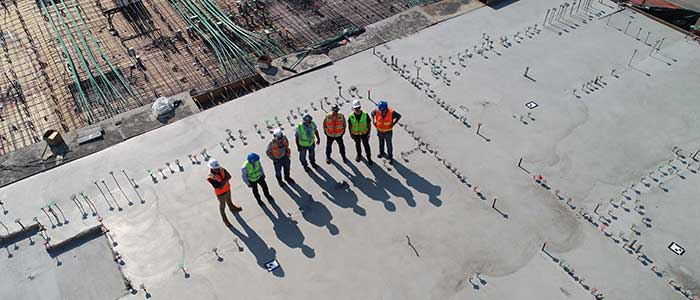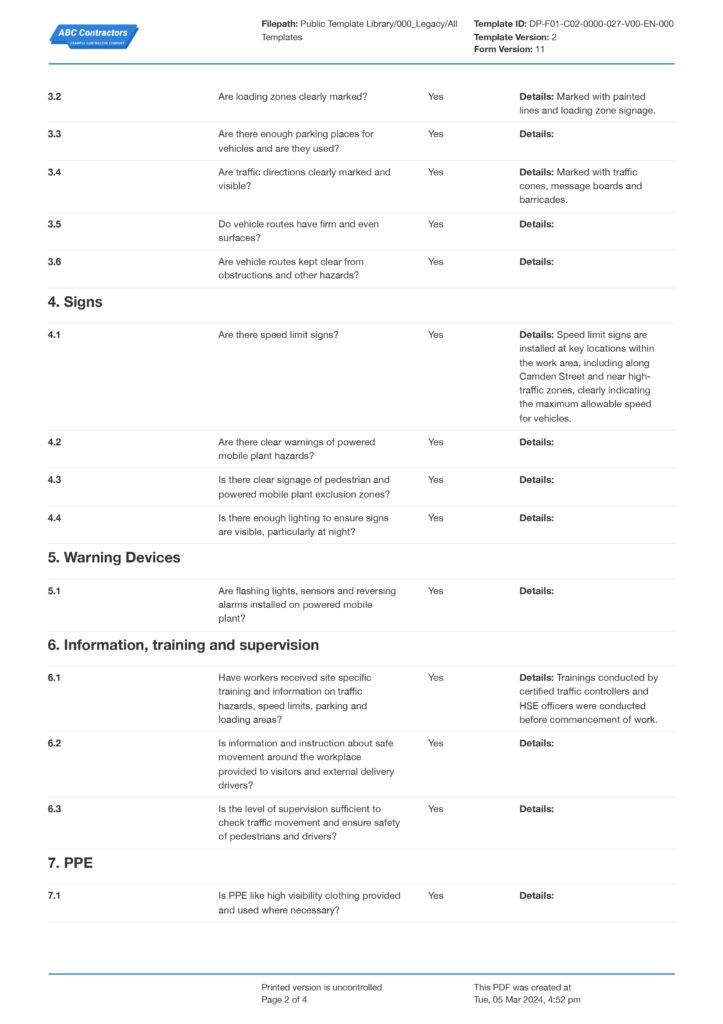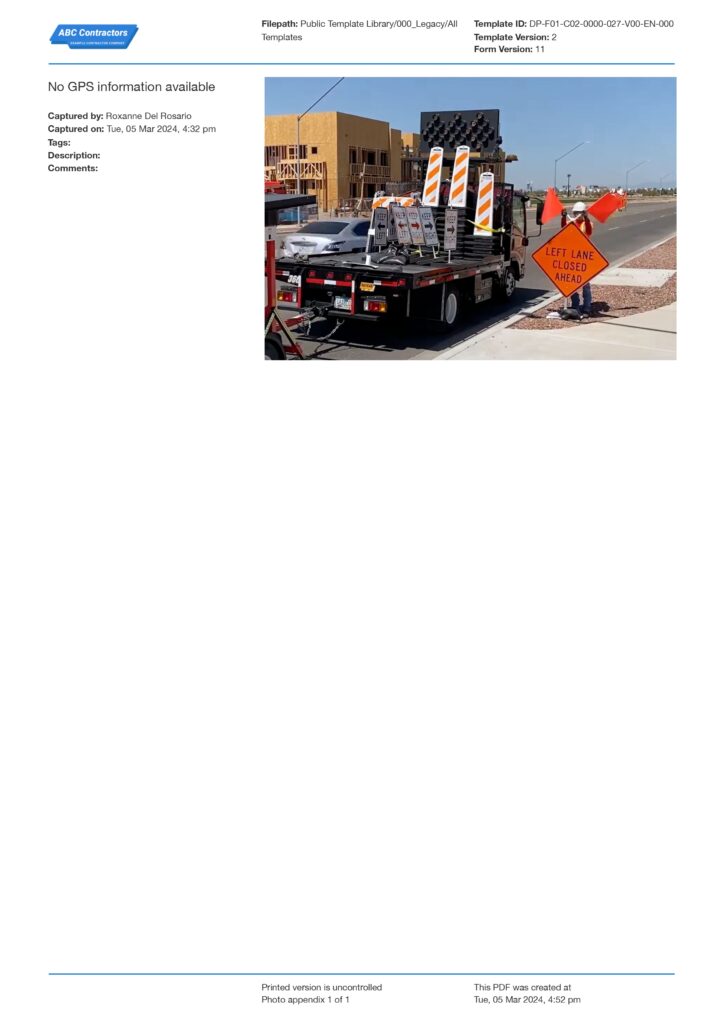Dashpivot Article – Sample Traffic Management Plan
Sample Traffic Management Plan
In this article, we will be providing a walkthrough on making your traffic management plan. We will also be providing you with a free, editable and usable sample traffic management plan.

The Intent of Traffic Management Plan
The power of human ingenuity is constantly evolving; thus, the world is continuously progressing almost every day. The constant construction of modern buildings is one of the most prominent pieces of evidence supporting this claim, which reflects several key factors of innovation and progress. However, with progress comes compromise. When building these jaw-dropping skyscrapers, some things are disrupted. The biggest area that is heavily affected by construction, especially in highly urbanised areas, is traffic. But of course, we have found a solution for this problem. A traffic management plan was invented to reduce traffic flow hazards to safeguard drivers, pedestrians, and employees. This is why developing efficient strategies for workplace traffic management is crucial.
How to make a traffic management plan
Project Details
Any and all information pertaining to the project may be found in this section of the traffic management plan. It is for this reason that information will be provided to both workers and the general public on the parts of the project that they need to be aware of and how they will be impacted by it. The following should be included in a comprehensive overview of the project's specifics about the traffic management strategy.
- Duration of Work: This information provides the beginning date of the project as well as the conclusion date. Workers and members of the general public will be informed of the schedule of construction of the project via the use of the time frame. This will be of assistance in ensuring that there is effective scheduling of traffic control measures, that neighbouring businesses and people are prepared for the interruption, and that there is improved cooperation with emergency services.
Start Date: January 15, 2022
End Date: November 19, 2026 - Location: This section of a traffic management plan's project specifications lays out the project's whole area of the project. Including the location in the project details also covers any environmental and geographical factors that are taken into account when building construction commences. Providing a completely exact location, such as 525 Collins Street, Melbourne, Victoria, 3000, Australia, will help identify and forecast the regions that are impacted by changes in traffic.
- Scope of Work: The types of activities involved during construction are described thoroughly in this paragraph. The public and stakeholders may be better informed and prepared for the effects when these works begin if this section is included in your traffic management strategy. One way to list the scope of work is as shown in the table below.
| Task No. | Scope of Work | Description | Possible Effects / Warnings |
|---|---|---|---|
| 1 | Site Preparation & Mobilization | Install advance warning signs and traffic control devices. Set up temporary lane closures and detour routes. Coordinate with local authorities and stakeholders. |
Possible traffic delays and confusion for motorists; increased congestion. |
| 2 | Asphalt Milling and Resurfacing | Remove the existing asphalt layer. Prepare the road base and apply new asphalt. Conduct lane-by-lane resurfacing to maintain partial traffic flow. |
Noise and dust pollution; temporary uneven road surfaces causing potential hazards. |
| 3 | Temporary Traffic Management Implementation | Deploy traffic controllers and flaggers. Set up variable message signs (VMS) for public information. Implement temporary speed limits and lane shifts. |
Driver confusion; potential non-compliance with new traffic rules; risk of accidents. |
| 4 | Safety and Environmental Compliance | Establish pedestrian safety zones and alternative pathways. Apply dust and noise control measures. Ensure compliance with local roadwork safety regulations. |
Restricted pedestrian access; inconvenience to nearby businesses and residents. |
| 5 | Project Completion & Demobilization | Remove traffic control measures and clean up the site. Install final road markings and signage. Conduct a handover inspection with local authorities. |
Short-term residual disruptions; adjustment period for motorists to new road conditions. |
- Hours of Work: The hours when the project starts and concludes throughout the day are indicated by this information. Schedules for a few particular construction activities and the project's weekly length may also be included. Similar to the duration of the work section, the time will be used to notify employees and the general public about the project's construction timetable. This feature will help to ensure that traffic control measures are scheduled effectively and that nearby companies and individuals are ready for the disruption.Hours of work: 8AM-5PM, Monday-Friday.Demolition Schedule: 1PM-4PM, Monday - Thursday
Traffic Control
In this section of the traffic management plan, it is important to effectively manage and outline how to safely handle traffic on passing vehicles, heavy equipment, and pedestrians. This section is also divided into subjections to provide specifics on certain subjects of traffic. Here are the subsections included under traffic control in the traffic management plan:
- Separation: The goal of this traffic management technique is to ensure that construction-related vehicles and public vehicles may coexist safely. This tactic creates lanes for various types of vehicles. It is necessary to make sure that the cars travelling on the approved roadways are the correct ones. Let's use a three-lane road as an example. The two remaining routes are open to the public, but the one closest to the building site will be reserved only for cars involved in the project. This is a practical illustration of traffic control for separation.
- Pedestrian Lanes and Walkways: The purpose of pedestrian lanes and walkways is to allow people to safely move through areas that are being constructed. Sometimes, falling debris is unavoidable and may fall close to the sidewalk that people use on a daily basis. To prevent accidents and injuries from falling debris, a pedestrian lane or walkway is designed to divert traffic from the hazardous path and give people safe access to the area around the construction site.
- Vehicle Routes: The purpose of this regulation is to provide passing cars safe access to building sites. This is similar to pedestrian lanes and walkways, which offer an alternative path for vehicles to avoid falling objects that could severely damage automobiles and injure people. Additionally, these collisions may cause additional traffic congestion, which is not a good case. To ensure safety and avoid obstructing traffic, it is crucial to make clear the routes that vehicles may follow.
- Signs and Warning Devices: Roadside information is provided by signs and warning devices, particularly near construction sites. These might facilitate safe traffic flow for automobiles, pedestrians, and stakeholders close to building sites. Accidents may be avoided with these in the vicinity. Bright colours are probably going to be utilised on these signs since they need to be clearly observable in order to be successful. The signage's text must then be legible and sufficiently lengthy for oncoming traffic to read it in its entirety while driving. These signs may be made readily comprehensible by adding lights that produce colours that are universally known (for example, red indicates stop, yellow indicates caution, and green indicates go).
- Traffic Enforcers: These employees have received specialised training in controlling traffic around construction sites. In the majority of nations, traffic is handled by the police. They are often used to direct vehicles and people on the new routes during the initial few days of construction, on days when special events are held, when traffic has to be diverted, and on days after the project is completed to direct people back to the previous route.
- Inspection: This type of inspection is meant for vehicles used on construction sites. Inspections must be done to ensure that the vehicle is optimally working and prevent road traffic disruption. This inspection is also meant to maintain safety when driving these vehicles. It must be made sure that the requirements for inspection are completed before deploying the vehicle to work. To understand these further, read more at Driver Vehicle Inspection Report Requirements.
Traffic Management Layout
A traffic management layout is made to safely arrange routes in the traffic management plan. We will be able to observe how to control traffic flow in the area where the construction is taking place thanks to this plan. A thorough graphic outlining all traffic control measures in the construction area is the end product. This map, which is often marked up, includes details on construction activities, traffic control measures, and necessary signage. The following are the essential elements that the diagram must include: pedestrian walkways, vehicle routes, safety zones, signs, and warning devices.
Communication and Emergency Procedures.
This is a crucial part of the traffic management plan, as communication plays a giant role in managing traffic, and emergency response needs to be clearly defined on what measures to take to effectively rescue individuals if ever an emergency occurs. This section in the TMP also has subsections to break down important details of the section. Here are the following subsections of the Communication and Emergency procedures in a TMP:
- Communication: This subsection highlights the important roles in traffic management and channels to which information could be passed if ever there are changes in traffic. These roles are clearly defined along with the kind of information that is vital to be passed. Having this established will streamline traffic management around the construction area.
- Emergency Procedures: This section provides the step-by-step procedures on how to respond to a possible emergency on site. The subsection envelops emergencies such as breakdowns of critical equipment, road accidents, and injuries. Roles are also defined in this section to give clarity on who should contact whom and who should respond to rescue. It is important that roles are given to qualified personnel to make sure the procedures are followed through.
- Emergency Contact Information: This subsection is a list of all contacts that are needed whenever an emergency occurs. The following are the contacts that are necessary on your TMP: Police department, fire department, ambulance of the nearest hospital, towing and recovery services, utility companies, local government units, and environmental and hazmat response.

Use and customise traffic management plan forms for free
Digital Sample of Traffic Management Plan
Create a template for your traffic control strategy that is consistent across all of your sites, much like this example. When it comes to dealing with the effects of construction work in public spaces, a traffic management plan is very necessary. This is especially true in situations when the work may temporarily disrupt the flow of traffic for both vehicles and pedestrians. For the purpose of ensuring the safety of both personnel and the general public, the plan identifies possible dangers, describes control mechanisms, and establishes methods for dealing with emergencies.
The following are the essential components that should be included in any ideal template for a traffic management plan:
- Project details include:
Location of work
Duration and scope of work - Traffic control checklist with sections for:
Separation
Pedestrian and vehicle routes
Signs and warning devices
Traffic Enforcers
Inspection - Traffic management layout
- Emergency procedures
Signature fields to complete and approve the traffic management plan
For the purpose of completing the traffic management plan example that was shown earlier, our template, which is available for free use and modification, was utilised. The example of our traffic management plan may be utilised electronically, providing greater flexibility than a PDF that is set in place.
Use digital solutions to improve your management of your traffic management plans
While using forms gives your traffic management plan an effective structure, it still requires you to manage individuals plans across multiple work sites which can result in disorganisation. Furthermore, if a plan is updated, workers will have to locate and refer to the new version of the document before they can implement any changes.
This is why many modern companies have switched to using a digital traffic management plan app. By using an application, you can create, complete, access, and manage all your traffic management plans using any digital device. It works just as well on a desktop as it does on a mobile or tablet.
The application also allows you to give workers access to the most up-to-date version of a plan on their own mobile devices and notify them if changes are made. This makes it easy to deploy updated versions of plans to your workforce.

Traffic Control Plan template
Create and complete reliable traffic control plans to keep all of your stakeholders and equipment moving around site safely.

Safe Work Method Statement for Driving/Transportation template
Ensure your workers and projects are referencing a good safe work method statement when driving - not bad habits.

Site Establishment Checklist template
Ensure all of your sites are properly established for your projects, workers and other stakeholders.





